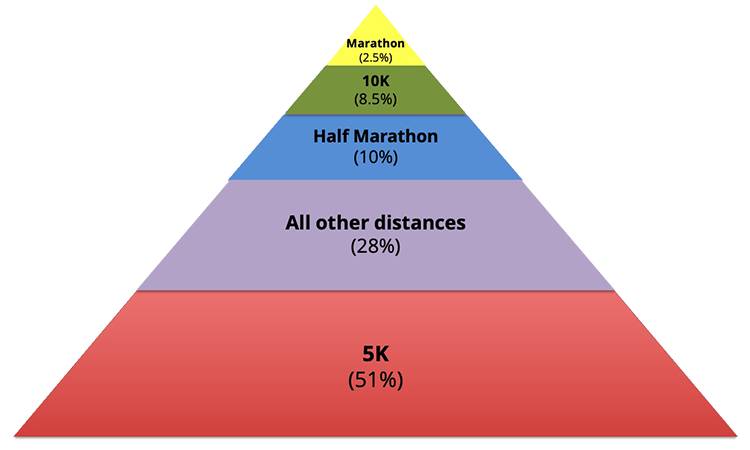
Despite the ubiquity and influence of social media, running at its core is an individual sport. And arguably no decision is more personal than a runner’s preferred race distance. So here we break down the pros and cons of the most popular race distances. No matter which distance you choose, keep in mind that a runner is a person who runs—there are no “real” runners, only runners. And the best race distance is the one that motivates you to get out there and challenge yourself.
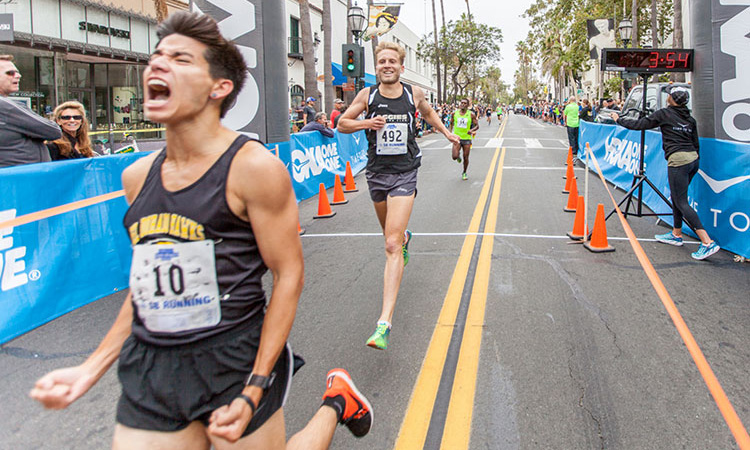
The Mile
PROS: Not an intimidating distance, but a standard measuring stick for gauging speed and fitness
CONS: Few organized mile events in the U.S.; blink and it’s over; training & racing this fast may increase your risk of injury
Equal parts pain and exhilaration, the mile combines the explosive speed of shorter races with the endurance of longer events—all in under 10 minutes. No matter what their level of interest in the sport, the tale of Roger Bannister first shattering the four-minute mile barrier resonates with runners and non-runners alike.
Nearly every runner at some point has timed themselves at the distance, whether as part of a high school fitness test or as a training tool for longer distances. So the mile is a convenient measuring stick to discover just how fast you can run relative to the clock, your fellow runners and history itself.
Unfortunately, most organized mile events in the U.S. are treated as fun runs rather than competitive affairs, with notable exceptions like New York’s 5th Avenue Mile, the Grand Blue Mile in Des Moines, and the Indianapolis Monumental Mile. In addition, organizations like Bring Back the Mile advocate for what they call “America’s Distance.”
In any case, regardless of speed you can cross the finish line knowing you’ve surpassed the fastest man on the planet—Usain Bolt’s agent, Ricky Simms, confirms that the nine-time Olympic gold medalist “has never run a mile”.
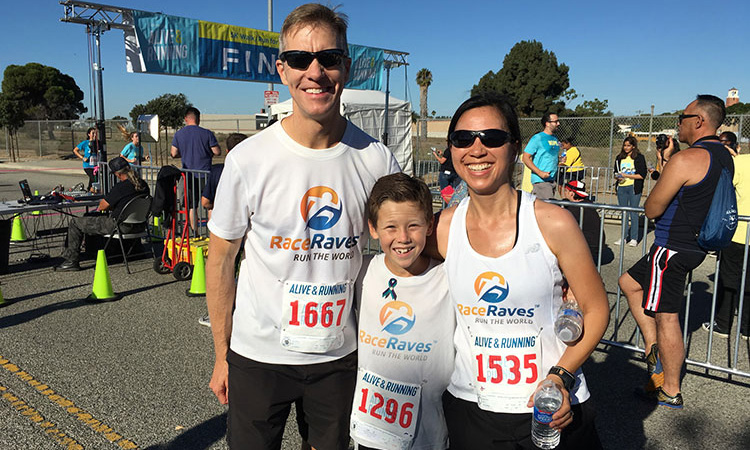
5K (3.1 miles)
PROS: Short-but-sweet distance will still earn you a medal at many organized events; great for running with friends; short recovery time
CONS: One man’s warmup is another man’s race; lower entry fee may mean less desirable swag
No matter your preferred race distance, it’s tough to argue with the 5K. As the Swiss Army Knife of distances, the 5K can serve as either a great waker-upper on a Saturday morning or a full-fledged challenge when run at max effort. In either case the recovery period is short, and most runners who train with any regularity can run back-to-back 5Ks on Saturday and Sunday without limping into the office and falling asleep at their desk on Monday.
For most runners the 5K is their introduction to organized running, whether it be a local race with friends, a charity event for a worthy cause, or as part of a larger event such as the Abbott Chicago 5K. For some, their first 5K will ignite a lifelong passion culminating in a closet filled with tech tees and a wall lined with medals; for others, it will further motivate them to shelve their running shoes and return to the comfort of their recliner.
Choose your 5K event wisely, however, and you may just be able to convince those same friend(s) to join you at your next…
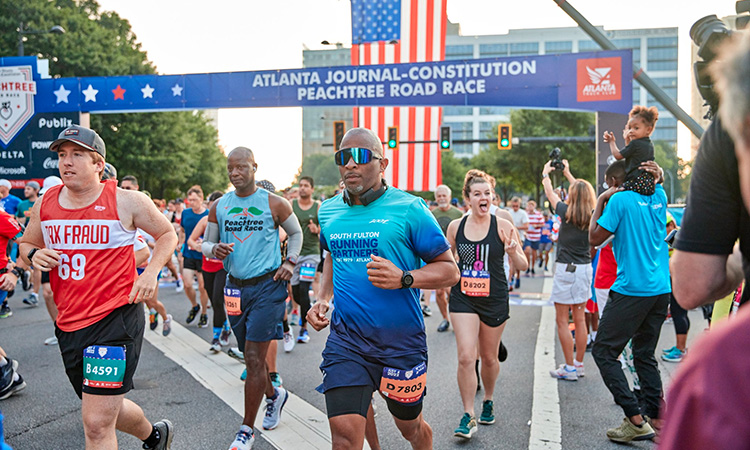
10K (6.2 miles)
PROS: Enables sporadic runners to step outside their comfort zone, without the anxiety & demands of a half marathon
CONS: “Tweener” distance hurts more than a 5K without the glory of longer distances
As race distances go, the 10K is that awkward teenager who doesn’t quite fit in—not geeky enough for the nerds, not cool enough for the jocks. According to Running USA there were more half marathon finishers (1.79 million) in the U.S. in 2019 than 10K finishers (1.5 million), a curious statistic given that the half marathon more than doubles the distance of the 10K.
That said, the 10K is not without cachet—notable events include the Beach to Beacon 10K founded by Olympic marathon gold medalist Joan Benoit Samuelson, Memorial Day favorite BOLDERBoulder, and the AJC Peachtree Road Race, an Independence Day tradition and the country’s largest annual foot race with more than 60,000 finishers in 2019.
Often overlooked and underappreciated, the 10K is a “tweener” distance—too far for beginners but too short for many seasoned runners, more intimidating than a 5K but without the post-race euphoria that comes with longer distances. At the same time, it’s far enough to make inexperienced runners appreciate that their comfy canvas Vans or Converse Chuck Taylor high tops may not have been the smartest choice of footwear.
Tackling a 10K is typically not a spur-of-the-moment decision, as the distance requires some training to finish comfortably. As such, 10K runners may have a harder time convincing couch potato or novice running friends to join them than they would for a 5K. But for those who enjoy the challenge of completing 6.2 miles, the 10K may very well act as the gateway drug to more demanding challenges like…
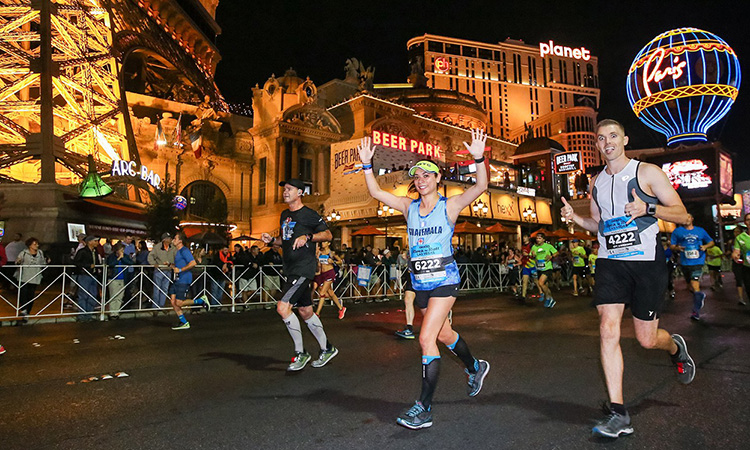
Half Marathon (13.1 miles)
PROS: For many the ideal balance of speed & stamina; long enough to feel like a legitimate effort, but short enough to run hard without limping for the next three days
CONS: Requires focused training over many weeks; snobby marathoners will still look down on you
Widely considered the “sweet spot” of distance running, the half marathon until recently was the nation’s fastest-growing race distance according to Running USA. And it’s easy to see why—after all, 13.1 miles is the threshold at which many enthusiasts consider themselves “serious” runners. And while a dedicated training plan goes a long way toward ensuring success at the distance, training for a half marathon requires significantly less time and mileage than longer events.
One key group contributing to the popularity of the half marathon is traveling runners. For many of these athletes, 13.1 miles represents the minimal distance at which they can justify—to themselves and others—the time and expense of traveling for a race. As such, several online communities (including ours here at RaceRaves) have emerged to support and connect runners looking to run a half marathon (or other distance) in all 50 states or on all 7 continents.
Given its popularity, and tired of caveating their effort with the disclaimer “just the half”, some devotees have called for a rebranding of the distance to help lift it out of the shadow of its parent race; proposed names include “Pikermi” (the halfway point between Athens and Marathon on the original Olympic marathon course) and “Thirteener”. But no matter the name, 13.1 will always be half of 26.2, and at some point it becomes increasingly difficult to turn a deaf ear to the siren song of running’s most tempting mistress…

Marathon (26.2 miles)
PROS: The ultimate proving ground and a bucket-list staple; the most celebrated distance among both runners & non-runners; typically the best swag
CONS: Requires rigorous training; no matter your fitness level, that last 10K is going to hurt
Czech running legend Emil Zátopek said it best: “If you want to run, run a mile. If you want to experience a different life, run a marathon.” The marathon is the gold standard of race distances and the definitive measuring stick for most runners. And as the ultimate proving ground for distance runners, the 127-year-old Boston Marathon is perhaps the most iconic foot race on the planet.
When non-runners talk about their crazy running friends, more often than not they reference their marathon exploits. The distance itself has even become a societal metaphor, with any task that requires patience and diligence being compared to “a marathon, not a sprint”.
But glory don’t come easy. And for intrepid athletes looking to slay the 26.2-mile dragon, the most important advice we can offer is this: respect the distance. The marathon is the ultimate “tough love” teacher, and the lessons it teaches are humility, adaptability and don’t you dare give up–ity. If you have a weakness, the marathon will find it and exploit it until you’re ready to throw in the towel. It’s like a bully who turns you upside down, shakes all the change out of your pockets, and then leaves you out in the cold wearing just your underwear.
Having said that, for a first-time marathoner few moments in life will rival the raw euphoria of crossing that finish line knowing all the blood, sweat & tears have paid off. Like lightning in a bottle, it’s a tough if not impossible feeling to recapture. But many will try, and some according to the simple math of the hardcore runner: farther + longer = better…
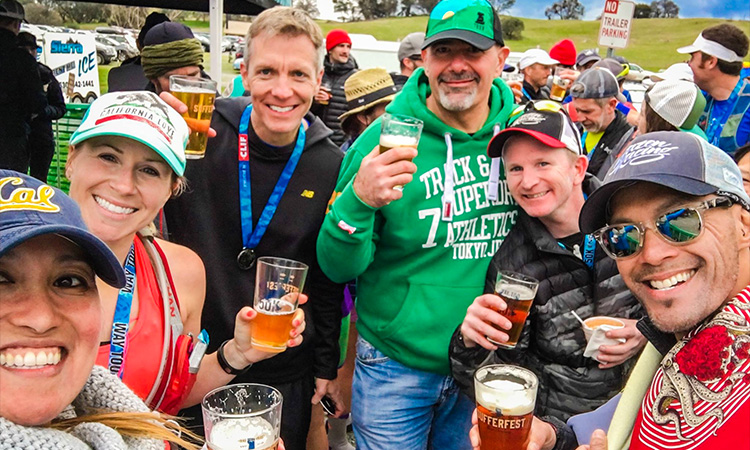
Ultramarathon (>26.2 miles)
PROS: You’ll never run out of ways to challenge yourself; commonly features softer dirt trails, pristine scenery and a low-key “one with nature” vibe; belt buckles make cool swag
CONS: You’ll likely spend a lot of time running alone; be prepared for hills and lots of them; requires above-and-beyond commitment to both training & racing
Though technically defined as any race longer than a marathon, grouping all ultramarathon distances together ignores the fact that hardcore ultramarathoners tend to be skeptical of the 50K (31.1 miles) as a “real” ultramarathon. Nonetheless, the 50K is an excellent springboard for intrigued runners looking to test the waters of the ultramarathon without cannonballing into the deep end.
After the 50K, though, the water gets deep in a hurry with 50 miles being the standard next step, followed by 100K (62 miles) and what many ultramarathoners consider the ultimate proving ground, 100 miles. Starting at 50 miles, race day logistics must take into account the commitment of not just the runner but also friends and family willing to act as “crew” for the day (or multiple days) or even as pacers when the going gets tough. And you’ll quickly get used to hearing amazed colleagues say, “50 miles? I can’t even drive that far!”
Because most ultramarathon courses feature unpaved trails and plenty of hills, the pacing and strategy are distinct from your typical road marathon. Slow and steady wins this race, with careful attention given to nutritional intake throughout the day. As noted sports nutritionist Sunny Blende puts it, “Ultras are just eating and drinking contests, with a little exercise and scenery thrown in”.
While not for the faint of heart, ultramarathons are the ultimate challenge for runners hell-bent on finding their personal limits.
For ambitious athletes in search of a bucket-list adventure, consider the Comrades Marathon aka “The Ultimate Human Race.” First run in 1921, Comrades is a 90K (56-ish mile) celebration of South Africa and, with 19,078 starters in 2019, the world’s oldest and largest ultramarathon. Or, earn the title of ultramarathoner with the least amount of effort at Tulsa’s Route 66 Marathon, which offers a 0.3-mile detour (= 26.5 miles total) to complete the “World’s Shortest Ultramarathon.”
👉 Agree or disagree? Let us know your favorite distance (and why) in the Comments below!
(Updated Feb 21, 2023; originally published Oct 26, 2016)
Looking for more running events? Search for races by state/city or month, and try our handy Find a Race tool to search for events by name, date range, distance, location, terrain & more. Then sign up for a free account to build your wish list and start coloring in your 50 States Map!
Author: Mike Sohaskey
Mike Sohaskey is the co-founder of RaceRaves, the premier online reviews community for runners to share their race experiences and find their next challenge. Mike honed his creative and critical thinking skills as a research scientist, earning a Ph.D. in Cancer Biology from Stanford. He’s also completed over 100 races — including 50+ marathons and ultras — in locations ranging from Antarctica to Zimbabwe.
Other RaceRaves articles you’ll enjoy (trust us!)
June 2023 Featured Races
Getting to Know the Abbott World Marathon Majors
Coach Denise: Breaking Through The Wall
Iconic Short-Distance Races (Spring)
Top Five Things You Can Do as a RaceRaves Member
And for more helpful articles, check out our blog!
Subscribe & Stay Connected
Find this article informative? Please share it, and let others know RaceRaves is the premier online resource to DISCOVER, REVIEW & TRACK all their races and to CONNECT with other runners! Plus, sign up for our newsletter to receive the best racing-related content and special offers every month!
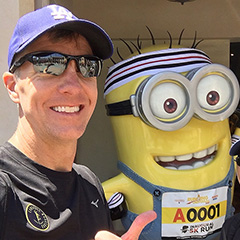
10 miles. Just enough to leave you wanting more but glad you don’t have to run it.
Surf City 10 Miler in October is perfect course – flat and scenic.
13.1 Is long enough to get you pumped put but the training doesn’t consume your life.
Pretty good summary!!! I gotta say that marathons make me suffer a lot more than any ultras. It’s the running on physical and mental edge, close to my limit, that makes marathons such a life transforming experience, the pain, the emotions packed in the three hours of running are intense. And don’t get me wrong, I love ultras, raced many 50-milers but they are just different, more mental, more fun, more subtle pain;)
Interesting post, I like the chart, for me it comes down to cost-benefit ratio .. I feel racing 5k is a great way to stay in shape while avoiding injuries and without the cost in time associated with longer races/training so more time for my family and other hobbies. I might end up trying longer distances but 5k does not feel like “warming up” to me, especially not at full speed.
I’m also a fan of the 13.1 mile distance. I find that my recovery is quick – just a couple days – and I’m right back to it. Whereas, I get so beat up after I run a marathon that it usually takes me a solid week before I can slowly ramp my training back up.
However, in my opinion, none of the shorter distances can hold a candle to the feeling of accomplishment, euphoria, achievement, and relief at the completion of a marathon. It means so much more because the training and the race itself are so a long and arduous.
It’s a blessing and a curse because you hate how bad the marathon beats you up at the end of it, but you just can’t resist the allure of the glory. I’m sure we’ve all said at one point or another after a marathon, “This is the last one I’ll ever do.” I’ve done 3 marathons so far and I’ve said that at the end of each, haha.
The half marathon being more popular than the 10k, while technically correct, is somewhat misleading. Using the author’s description or my own sense of it, I would put the 12k in the same category as the 10k, and with events such as Bay to Breakers and Bloomsday, that group (10k and 12k) might put the numbers past the half marathon. Not a big issue; just a thought.
I agree with the analysis of the half marathon being the threshold for travel (races like Bloomsday or B2B being an exception). For me if it involves a flight more than an hour or so it better be a marathon or longer. Of course if I’m traveling someplace for another reason (e.g. work), I’ll try to find a race of the longest manageable distance for my travel plans.
Thanks for the article.